Erik Swahn’s exuberantly colorful Farbteiler (German for 'color divider') employs theory, art history, and geometry to masterfully create visually stunning, timeless pieces. The Swedish architect/coder/artist’s collection explores color-color interaction and how colors interact with geometric structure, sequence, pattern, and even time and truth.
Color theory plays a crucial role in Farbteiler, explaining why the eye is immediately and intuitively attracted to each piece. Based on early 20th c. Bauhaus artist and teacher Johannes Itten’s Farbkreis color wheel, Farbteiler employs a random subset of one to twelve colors to create a delightfully washed palette.

Itten's Color Wheel, Farbkreis (1961)
Using pointillism and drawing on his experience as an architect, these colored patterns transcend space and time with their mathematical and nearly supernatural understanding of palette. While rarity dictates that monochrome Farbteiler pieces are the most coveted by some collectors, the standout pieces in this collection celebrate Itten’s color interactions while pointing to the icons on whose foundation the collection is built.
Farbteiler also serves as a course in generative art history. The minimalist structures harken back to Sol LeWitt’s simple, geometric techniques, particularly his famous work with cubes exemplified by his Untitled (1968).
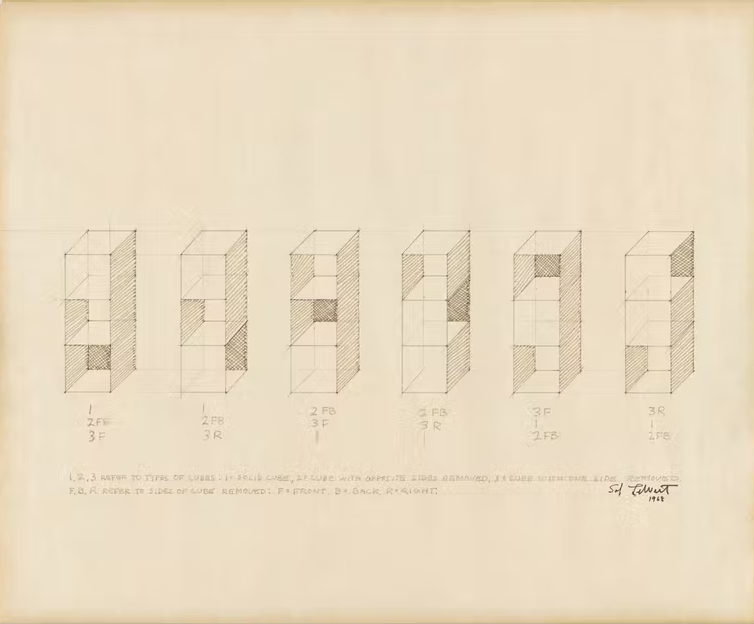
Untitled (1968), Sol LeWitt
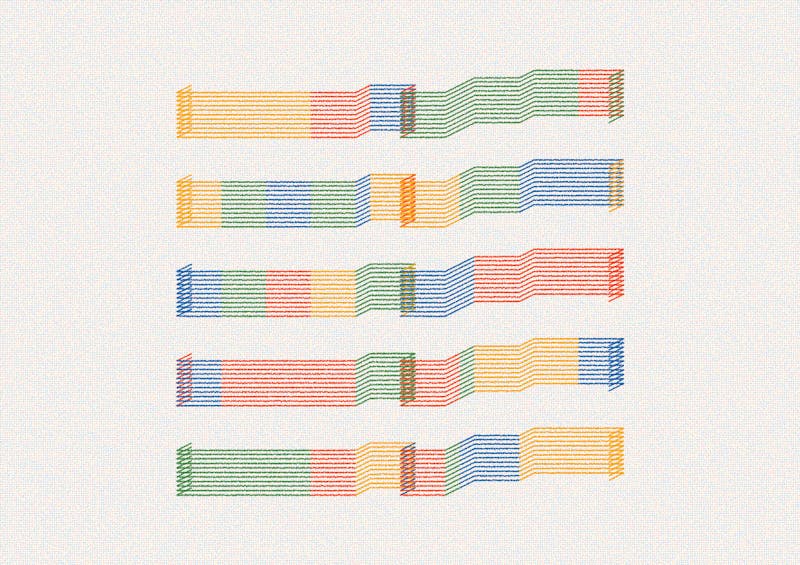
Farbteiler #418
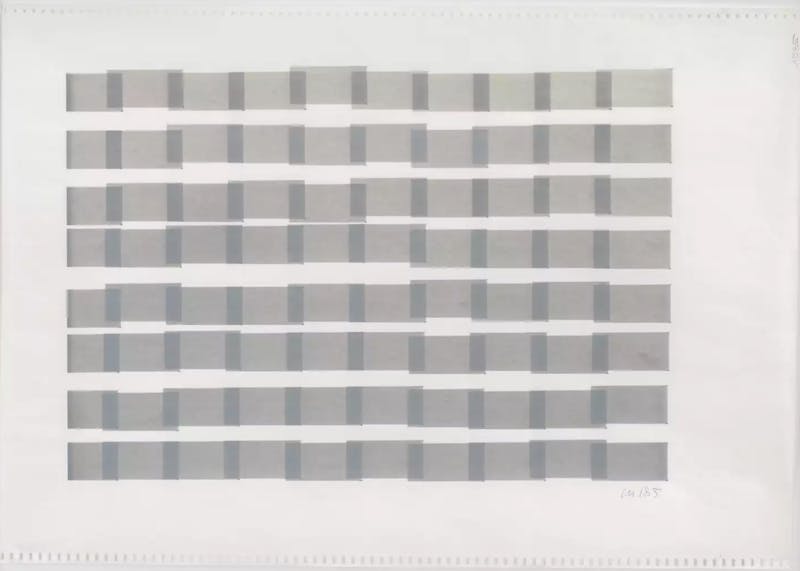
#418 is a particularly striking example of a delectable color palette that seems to mirror yet bring life to 8 Colonnes (1985), Vera Molnar
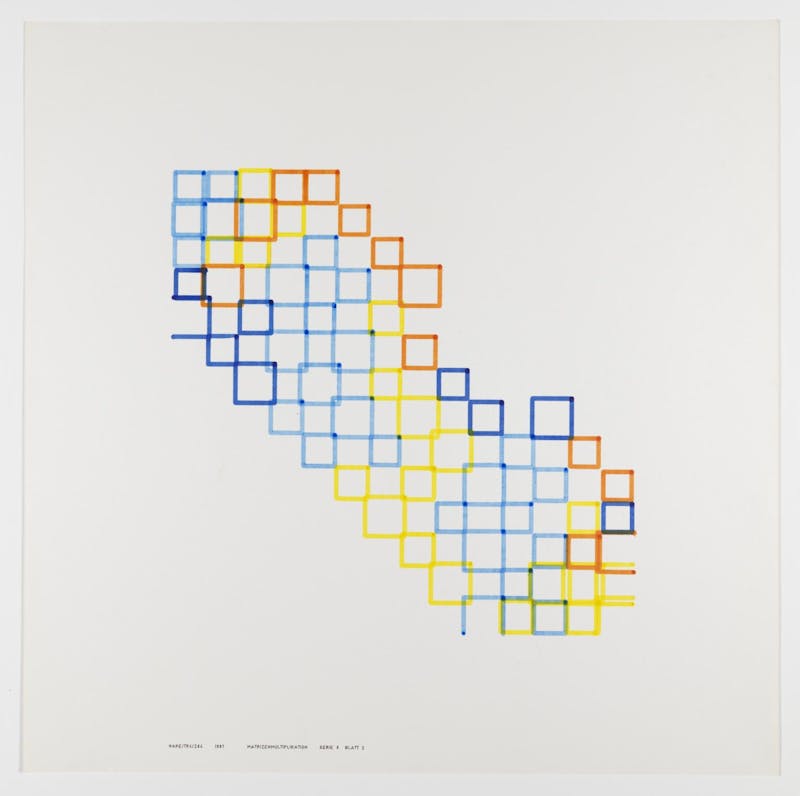
The work of Frieder Nake can be seen with the use of overlapping, colorful geometric shapes on white background, surrounded by a thick white border in Matrix Multiplications (1967), Frieder Nake
Swahn builds upon the work of these legends due to his expert knowledge of enduring color palettes and his ability to code geometric complexity. Geometry and architecture are central to the collection as he employs rectilinearly plotted dots in a usually self-avoiding random walk to form walls, spaces, and grids with a textile quality. To achieve this, he uses only dots to form lines in a cabinet projection, often repeated vertically or separated into levels. This use of geometric patterning is an ode to the artist’s affinity for patterns in his other modes of artistic expression: architecture, music, and language.
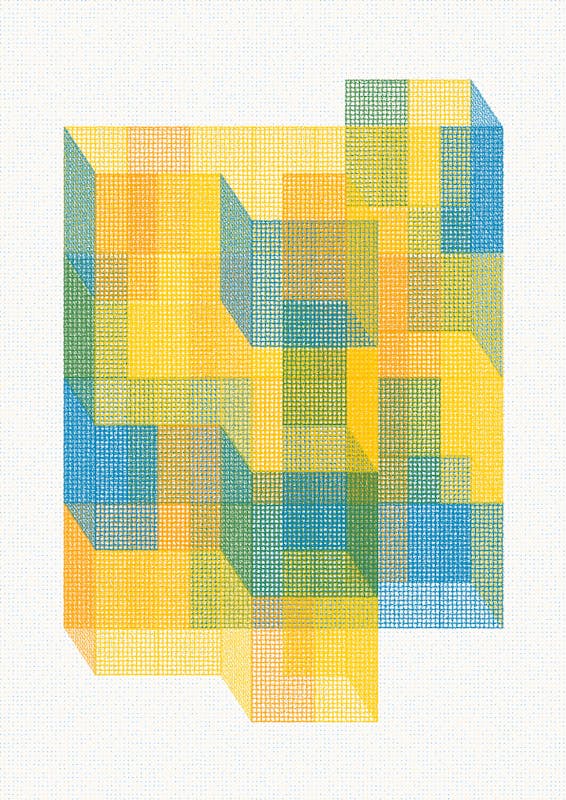
Farbteiler #282

Farbteiler #282 evokes Nake’s Walk-Through-Raster Vancouver Version (1972) with its central blue grid surrounded by densely woven layers of yellow and orange.
In Itten’s color wheel, opposed colors are paradoxically complementary. Farbteiler brilliantly celebrates and investigates this notion of opposition that is ultimately complementary. The collection is familiar and timeless yet new and refreshing; it is an ode to the past yet on the cutting edge of an artistic movement; there is striking variety individually while the collection remains identifiably unified; complex geometry and pointillism combine to form simple patterns and shapes; each piece appears open yet closed.
As Swahn himself describes the collection: “everything is inside and everything is outside.”